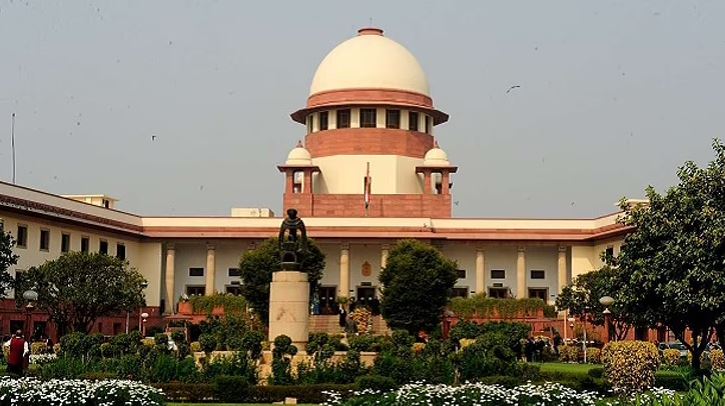New Delhi: The Supreme Court Friday upheld the SIT’s clean chit to then Gujarat chief minister Narendra Modi and 63 others in the 2002 riots and said there is no “tittle of material” to support the allegation that violence after the Godhra incident was a “pre-planned event” owing to the conspiracy hatched at the highest level in the state.
Bringing the curtains down on the bid to reopen the probe, the apex court said the material collected during the investigation does not “give rise to strong or grave suspicion regarding hatching of larger criminal conspiracy at the highest level” for causing mass violence against Muslims.
The top court said the proceedings in the matter have been pursued since 2006 “to keep the pot boiling, obviously, for ulterior design.”
“Suffice it to observe that there is no tittle of material, much less tangible material to support the plea of the appellant that the Godhra incident unfolded on February 27, 2002, and the events which followed, were a pre-planned event owing to the criminal conspiracy hatched at the highest level in the state,” a bench headed by Justice A M Khanwilkar said in its 452-page judgement, which included annexure.
The bench, also comprising Justices Dinesh Maheshwari and C T Ravikumar, dismissed a plea by slain Congress leader Ehsan Jafri’s wife Zakia Jafri who had alleged a larger conspiracy during the 2002 violence and had challenged the Gujarat High Court’s October 5, 2017 order rejecting her petition against the SIT decision.
Terming Zakia Jafri’s plea as devoid of merit, the bench said, “intriguingly, the present proceedings have been pursued for last 16 years (from submission of complaint dated June 8, 2006, running into 67 pages and then by filing protest petition dated April 15, 2013, running into 514 pages) including with the audacity to question the integrity of every functionary involved in the process of exposing the devious stratagem adopted (to borrow the submission of learned counsel for the SIT), to keep the pot boiling, obviously, for ulterior design.”
“As a matter of fact, all those involved in such abuse of process, need to be in the dock and proceeded with in accordance with the law,” the bench observed.
Zakia Jafri had challenged the SIT’s clean chit to 64 people, including Modi who was the Gujarat chief minister at that time and alleged a larger conspiracy.
The apex court appreciated the Special Investigation Team (SIT) for its “indefatigable work” in challenging circumstances and said it has come out with “flying colours unscathed”.
The top court said no fault can be found with the SIT’s approach and its February 8, 2012, final report is backed by firm logic, “expositing analytical mind and dealing with all aspects objectively for discarding the allegations regarding larger criminal conspiracy…”
The bench upheld the decision of a magistrate in accepting the final report submitted by the SIT and rejecting the protest petition filed by Zakia Jafri.
“We do not countenance the submission of the appellant regarding infraction of rule of law in the matter of investigation and the approach of the magistrate and the high court in dealing with the final report,” the bench said.
Congress leader and former MP Ehsan Jafri was among the 68 people killed at Ahmedabad’s Gulberg Society during violence on February 28, 2002, a day after the Godhra train burning that claimed 59 lives.
The riots that it triggered killed 1,044 people, mostly Muslims. Giving details, the Central government informed the Rajya Sabha in May 2005 that 254 Hindus and 790 Muslims were killed in the post-Godhra riots.
In its verdict, the apex court noted that the SIT had formed its opinion after considering all the material collated during the investigation and the question of the further probe would have arisen only on the availability of new material/information in connection with the allegation of a larger conspiracy at the highest level, which is not forthcoming in this case.
“As aforementioned, the SIT has gone by the logic of falsity of the information or material and including the same remaining uncorroborated.
“In that, the materials collected during the investigation do not give rise to strong or grave suspicion regarding hatching of larger criminal conspiracy at the highest level for causing mass violence across the state against the minority community and more so, indicating the involvement of the named offenders and their meeting of minds at some level in that regard,” it said.
The bench said the magistrate after applying his mind independently to the final report and the material appended chose to accept it as it is without issuing any other direction to the SIT.
According to the bench, it appeared that there was a “coalesced effort of disgruntled officials” of Gujarat along with others to “create sensation” by making revelations that were false and the falsity of their claims had been fully exposed by the SIT after a thorough investigation.
“Accordingly, we hold that this appeal is devoid of merits and resultantly, deserves to be dismissed in the aforementioned terms. We order accordingly.”
The apex court said that the inaction or failure of some officials of one section of the administration cannot be the basis to infer a pre-planned criminal conspiracy by the authorities or to term it as a state-sponsored crime against the minority community.
PTI
